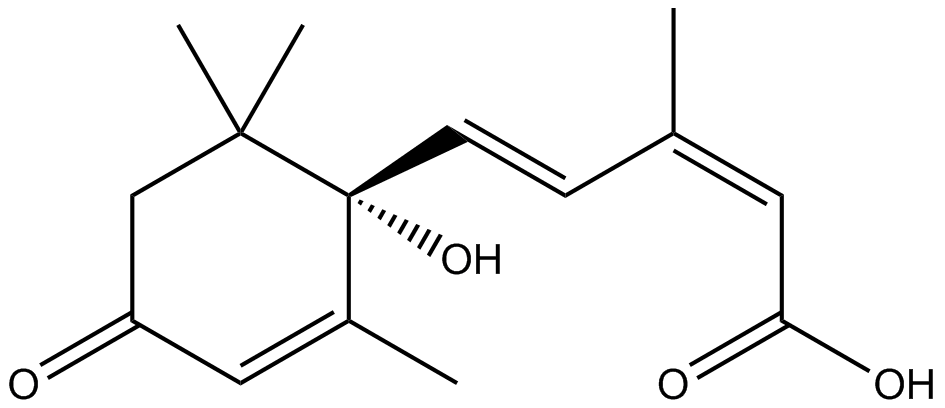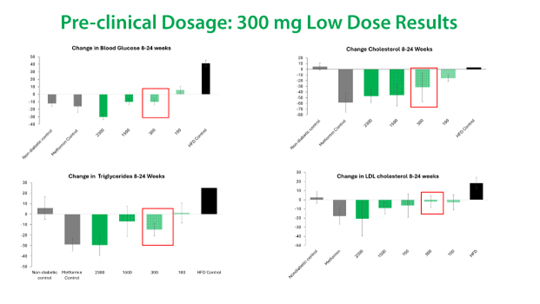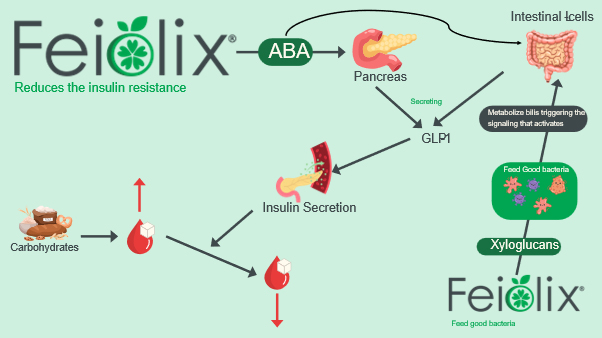The GLP-1 Connection: Your Body’s Natural Ally
You may have heard about GLP-1 in the news lately, especially in relation to weight management. GLP-1 (Glucagon-Like Peptide-1) is a hormone that plays a crucial role in regulating blood sugar levels and appetite. When food enters the small intestine, GLP-1 is secreted by L-cells in the gut, triggering several important effects:
- Insulin secretion: GLP-1 stimulates the pancreas to release insulin, helping to lower blood sugar levels.
- Glucagon suppression: It inhibits the release of glucagon, a hormone that raises blood sugar.
- Slowed gastric emptying: GLP-1 delays the rate at which food leaves the stomach, promoting a feeling of fullness.
- Appetite reduction: It acts on the brain to decrease hunger and food intake.
These combined effects make GLP-1 a powerful tool in managing weight and blood sugar levels. This is why GLP-1 receptor agonists like Ozempic have become popular for treating type 2 diabetes and obesity.
Abscisic Acid: The Hidden Gem in Feiolix

This is where abscisic acid (ABA) comes into play. Found naturally in fruits and vegetables, ABA has been shown to stimulate the secretion of GLP-1. Here’s the kicker: feijoas contain the highest concentration of ABA among all fruits and vegetables, with an impressive 4.29 mg/kg.Abscisic acid is not just a plant hormone – it’s also produced in small amounts in human cells. In our bodies, ABA has several important functions:
- Insulin Sensitivity: ABA can improve insulin sensitivity and glucose tolerance, similar to the effects of insulin itself.
- Anti-inflammatory effects: It can reduce inflammation in various tissues, which may contribute to improved metabolic health
- Thermogenesis: ABA may increase energy expenditure by promoting the conversion of white fat to brown fat, which burns more calories
- GLP-1 stimulation: ABA has been shown to stimulate the secretion of GLP-1 from intestinal L-cells. This means that ABA can help increase your body’s natural GLP-1 production.
- Dual Action: Interestingly, there’s a positive feedback loop between ABA and GLP-1. While ABA stimulates GLP-1 secretion, GLP-1 also stimulates ABA release from pancreatic cells.
- Highest Natural Concentration: Feijoas have the highest concentration of ABA among fruits and vegetables, making Feiolix an exceptionally rich source of this beneficial compound.
Feiolix: Harnessing the Power of Feijoa

Feiolix isn’t just another fruit powder. It’s a concentrated source of ABA, with feijoas containing the highest concentration among fruits and vegetables. This makes Feiolix a unique and potent supplement for supporting metabolic health. Feiolix is a whole fruit powder made from New Zealand feijoas, standardized to contain more than 4 mg/100g of ABA. By incorporating Feiolix into your diet, you’re giving your body a natural boost of ABA, which in turn can help:
- Increase insulin secretion from pancreatic β cells
- Enhance glucose absorption by skeletal muscle cells
- Regulate metabolism by decreasing inflammation and increasing GLP-1 secretion
- Increase satiety, helping you feel fuller for longer
- Boost postprandial thermogenesis, potentially reducing weight gain

The Science Behind Feiolix
In a preclinical study, mice on a high-fat diet were given Feiolix at different dosages. The results were impressive: Feiolix at a low dose of 300 mg per day was as effective as metformin (a diabetes medication) in significantly reducing elevated fasting blood glucose, triglycerides, total cholesterol, and LDL cholesterol

A Three-Pronged Approach
What makes Feiolix truly unique is its triple mechanism of action:
- ABA-induced GLP-1 secretion: The high ABA content stimulates your body’s natural GLP-1 production.
- Gut microbiome support: Feiolix contains dietary fibers that promote the growth of beneficial gut bacteria, which in turn can trigger GLP-1 secretion
- Polyphenol GLP–1 Secretion: Recent research has shown that polyphenols such as the catechins present in Feiolix are capable of inducing GLP-1 secretion in addition to lower inflammation in the brain to stop disruptive hunger signals


The Gut Microbiome: Your Inner Ecosystem
Feiolix contains dietary fibers that act as prebiotics, nourishing beneficial gut bacteria. These bacteria, in turn, produce compounds that can further stimulate GLP-1 production, creating a virtuous cycle of metabolic support.

The Science Behind Feiolix
Our research has shown that Feiolix can promote the growth of various probiotics by up to over 300% compared to control groups. This synbiotic effect underscores Feiolix’s potential as a comprehensive supplement for metabolic and gut health.
Beyond Blood Sugar: A Holistic Health Boost
Feiolix’s benefits extend far beyond blood sugar control. Our research suggests that it may also:
- Help reduce triglycerides and cholesterol levels
- Increase insulin secretion from pancreatic cells
- Enhance glucose absorption by muscle cells
- Reduce inflammation
- Increase feelings of fullness after meals
The Bottom Line and What this Means for you
If you’re looking for a natural way to support your weight loss efforts, Feiolix offers a promising solution. By harnessing the power of abscisic acid and supporting your gut microbiome, it may help you achieve your weight loss goals without the need for synthetic medications. Remember, while Feiolix shows great potential, it’s always best to consult with a healthcare professional before starting any new supplement regimen.
References:
- Anagenix. “What is GLP-1” Factsheet, August 2024.
- Bruzzone S, Magnone M, Mannino E, Sociali G, Sturla L, Fresia C, et al. (2015) Abscisic Acid Stimulates Glucagon-Like Peptide-1 Secretion from L-Cells and Its Oral Administration Increases Plasma Glucagon-Like Peptide-1 Levels in Rats. PLoS ONE 10(10): e0140588. doi:10.1371/journal.pone.0140588
- Bruzzone S, Ameri P, Briatore L, Mannino E, Basile G, Andraghetti G, et al. The plant hormone abscisic acid increases in human plasma after hyperglycemia and stimulates glucose consumption by adipocytes and myoblasts. FASEB J (2012) 26(3):1251-60. doi:10.1096/f.11-190140
- Zocchi E, Hontecillas R, Leber A, Einerhand A, Carbo A, Bruzzone S, Tubau-Juni N, Philipson N, Zoccoli-Rodriguez V, Sturla L and Bassaganya-Riera J (2017) Abscisic Acid: A Novel Nutraceutical for Glycemic Control. Front. Nutr. 4:24. doi: 10.3389/fnut.2017.00024






